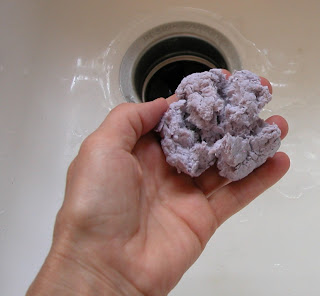With my first batch of papier mache, I allowed the varnishing to help create the finish. It blended and swirled the colors into something very nice to look at. With these beads I used permanent markers and silver and gold metallic ink markers. Here are a few examples:
I've a new batch of papier mache (see photo's from first post) and these pieces are less pebble-like, the round beads are more uniform, and I've experimented with a few different shapes. Initially, the necklace below was going to be made into a wind chime or mobile (using several discs instead of just these two), but I put a couple of the discs together and really loved the way it looked as a necklace.
Here are a few pictures of the necklace. After the painting had dried, I very, very lightly applied a varnish with a soft brush, and the design and colors remained intact. I now believe a safer approach would be to use an artists fixative prior to the varnish. I'm curious to see if there's a difference - I'll be sure to share the photos.













